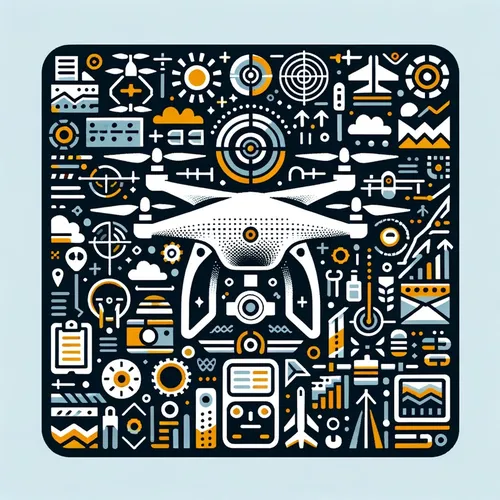Drone Pilots Soar: Juicy Secrets, Big Bucks, and Risky Business in the Sky!
- Author
- Quiet. Please
- Published
- Sun 24 Aug 2025
- Episode Link
- https://www.spreaker.com/episode/drone-pilots-soar-juicy-secrets-big-bucks-and-risky-business-in-the-sky--67493801
This is you Professional Drone Pilot: Flight Tips & Industry Updates podcast.
Professional drone pilots are entering a transformative period, as technological advancements and regulatory changes redefine the landscape for commercial operators, aerial photographers, and inspection specialists. Mastering advanced flight techniques is more essential than ever, particularly as fully autonomous drones rise in popularity. These drones, leveraging artificial intelligence and on-board sensors, can execute complex tasks from takeoff to landing, making them indispensable for industries that demand efficient large-area coverage, such as agriculture and infrastructure inspection. However, pilots still need to sharpen manual skills—like obstacle avoidance and precise flight path planning—for missions where remote control remains critical, especially in urban environments where unpredictable wind currents and radio interference are common.
Routine equipment maintenance is a non-negotiable part of professional operations. Industry leaders, including those using DJI Mavic 4 Pro or DJI Air 3S, recommend regular battery health assessments, sensor calibration, and firmware updates to optimize performance and extend drone lifespan. Keeping meticulous logs and performing thorough pre-flight checks help to reduce downtime and mitigate costly accidents.
Business opportunities for drone pilots continue to diversify. According to PilotInstitute, lucrative fields in 2025 include aerial photography, mapping, real estate marketing, agricultural analysis, and delivery services. Real estate agents report homes with aerial visuals are 68 percent more likely to sell—making photographic expertise and post-production skills using tools like DaVinci Resolve valuable assets. Drone delivery is also coming of age, with regulatory shifts such as the FAA’s evolving part seventeen rules and upcoming permissions for beyond visual line of sight flights that will unlock expansive opportunities in logistics and remote asset monitoring.
Certification and licensing requirements remain strict. The FAA maintains its stance that the Part 107 Remote Pilot Certificate is mandatory for commercial work within the United States, with online recurrent training every two years. For advanced operations—such as flights over people or in controlled airspace—additional exams and in-person flight reviews are necessary. Registration costs are increasing and all drones must broadcast Remote ID signals, reflecting the tightening of regulatory oversight.
Client relations and pricing strategies benefit from clear communication and value-driven packages. Professional operators are increasingly bundling aerial and ground imagery, virtual tours, or mapping services for clients in construction and agriculture. Transparent contracts and consistent follow-up maintain client trust while helping justify pricing in a competitive market. Liability insurance requirements have been strengthened, with mandatory coverage for commercial pilots—a shift driven by both regulatory updates and client demand for documented safety protocols.
Weather remains a pivotal concern; pilots must stay vigilant for abrupt shifts in wind speed, precipitation, or visibility, which can affect drone stability and image quality. Utilizing real-time meteorological apps and maintaining flexible flight schedules allows operators to avoid delays and ensure high service standards.
Recent news spotlights the rapid commercial drone market growth, which is forecasted by StellarMR to reach nearly sixty-eight billion dollars by 2032, driven both by fully autonomous and remotely piloted systems. The National Association of Realtors highlights aerial imagery’s outsized influence on property sales. Meanwhile, the FAA's latest remote identification rules and knowledge test requirements are making headlines, shaping the compliance landscape for all operators.
